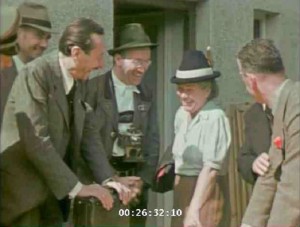
"This outing was shot by a baker who supplied bread to Dachau concentration camp. . . . Another title reads: 'Der Ausflug des BDFA, 1943' [Outing of the amateur film club, 1943]." United States Holocaust Memorial Museum.
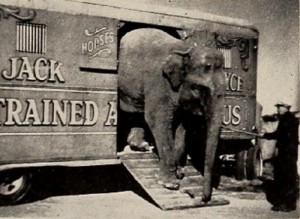
"What happens behind the scenes is always of interest to curious people — and most of us are curious. Remembering the delighted boys who sometimes get odd jobs in the backyard of the circus, Guy Nelli elected to let us see what they have seen, in Outside the Big Top. Not once are we shown the performance for which the whole effort is made, since Mr. Nelli very properly stays outside with his camera. Beginning with interesting and well filmed scenes of the circus in its early morning arrival, Mr. Nelli shows us how the Big Top is set up and carries us along until the show has ended. Odds are that he is a persuasive talker as well as a fine movie maker, because he got some of the best portrait and "candid" scenes of the performers that one will meet in many a day." Movie Makers, Dec. 1945, 496.
"Scenes from Croston village pageant, Saturday May 26th, 1951 - adults and children are seen in medieval dress, acting out scenes from the area's history. A number of 'Coffee Day' parades from 1937 to 1970 are shown, with Church groups and floats passing through the streets. The film ends with a man and two women in the garden of a house in Steyning, West Sussex." (NWFA Online Archive)
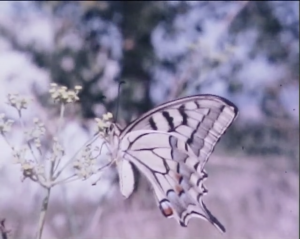
Documental sobre el ciclo de vida de la mariposa Papilo Machaón, desde su fase inicial como larva hasta su forma final como mariposa. “En el atardecer, descansan las mariposas esperando al nuevo día para continuar su misión, libando y fecundando flores, manteniendo así el equilibrio ecológico del fascinante mundo de la naturaleza”. (Papilio 1980)
Documentary about the life cycle of the Papilo Machaón, from its initial stage as a larva until its final form as a butterfly. "At sunset, the butterflies rest awaiting the new day to continue their mission, absorbing polen and pollinating flowers, maintaining the fascinating ecological equilibrium of the natural world. (Papilio 1980)
"Paradise Honolulu: Nobuo Miyaoka, using a Cine Special camera and Kodachrome film, has documented contemporary life in Honolulu as have perhaps few cine cameraists in recent years. The picture is essentially newsreel in style and depends upon titles to convey that which is not clear in the pictorial action. But interest is sustained in the careful selection of subject matter and the manner in which it has been photographed. A highlight is the fine night photography in color of Honolulu's annual lantern parade." American Cinematographer, May. 1951, 190.
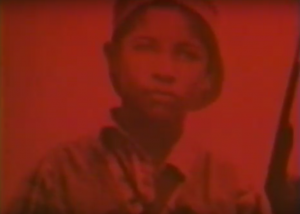
"En Patria Libre, Sergio García documentó los primeros logros de la revolución sandinista en Nicaragua. [...] Se trataba de un documental convencional, con una voz off (leída por Felio Eliel) sobre un momento de frescura y esperanza por el triunfo del Frente Sandinista de Liberación Nacional. El arranque del documental con una serie de imágenes de Sandino en alto contraste que culminan en la foto de un adolescente guerrillero (mientras que en la banda sonora se escucha a Pablo Milanés cantar "Los caminos") preludian el tono que se desarrollará sobre el caso de la revolución sandinista" (Vázquez Mantecón, 2012.)
"In Patria Libre [Free Country], Sergio García documented the first achievements of the Sandinista Revolution in Nicaragua. It was a conventional documentary, with an off voice (read by Felio Eliel) about a moment of freshness and hope because of the triumph of the Sandinista National Liberation Front. The documentary begins with a series of highly contrasted images of Sandino that end with the picture of a guerrilla teenager (while the soundtrack plays "Los caminos" [The roads] by Pablo Milanés), which is a prelude to the tone that will be used to describe the Sandinista Revolution" (Vázquez Mantecón, 2012).
"A short amateur film that show “how to stop a war without trying anything much.” Footage of protesters and activists advocating against the war in Vietnam are intercut with altered images of war." via Chicago Film Archives
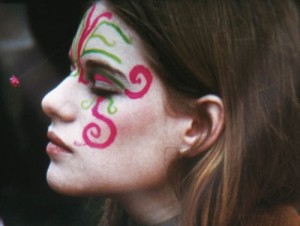
"Hippies, peace-niks, students, beautiful girls, civil righters, old ladies and more, protest the war. Who dares to say that they don't influence the mainstream? Beautiful color and exciting montage capture the feeling and motion of the march on the United Nations" via the Film-Makers' Cooperative.
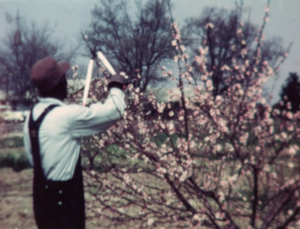
"The life cycle of the peach -- from peach blossom to peach pie" (Holmes, 2018).
Total Pages: 79